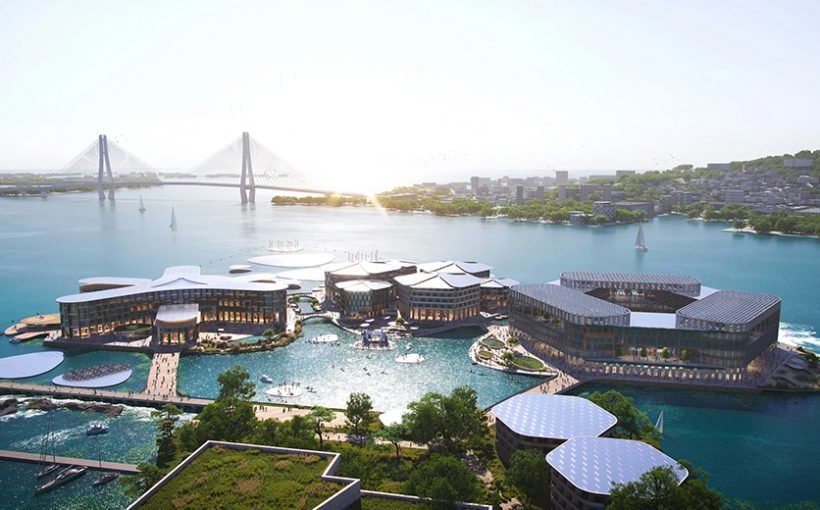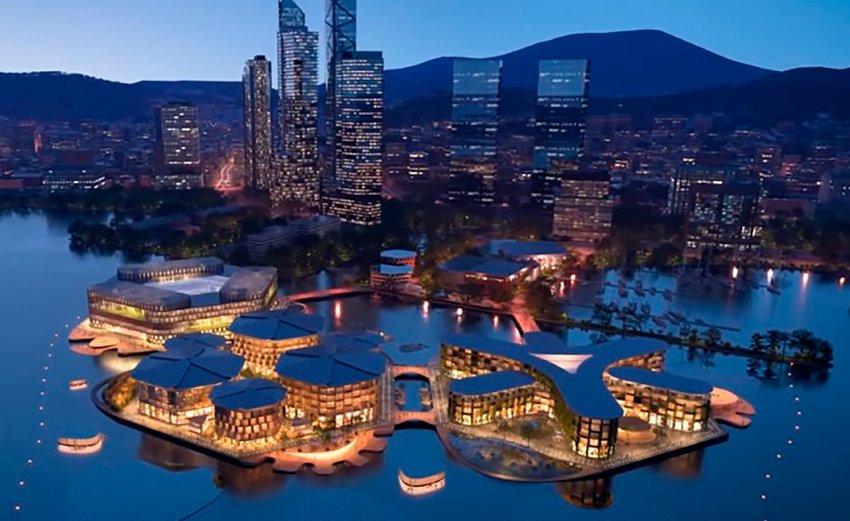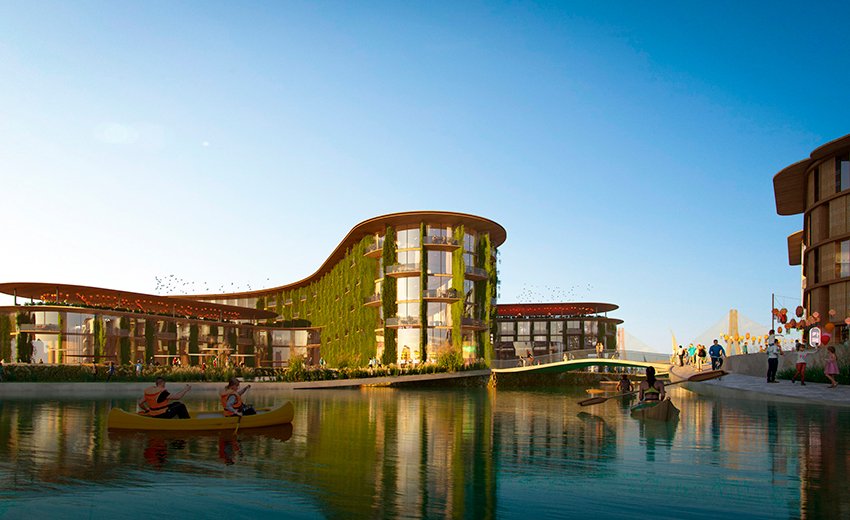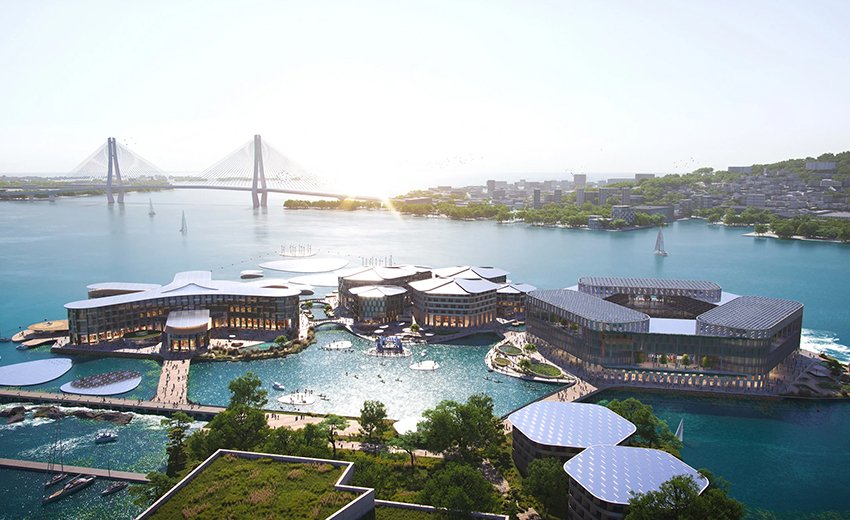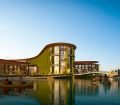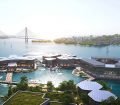Coastal cities everywhere are taking steps to resist the rising seas induced by global warming. With this in mind, the major port of Busan, South Korea, has just launched Oceanix, an innovative offshore project.
The C40 Cities Climate Leadership Group predicts that by 2050 sea levels will rise by more than 50cm and affect 800 million people.
A warning heard by architectural firms BIG (Bjark Ingels Group) and Samoo. In collaboration with tech company Oceanix, they imagined a floating city project anchored off the coast of Busan.
Three platforms, three worlds
Oceanix Busan is a floating, eco-responsible and modular neighbourhood using a wide range of sustainable materials and technologies to create a self-sustaining human habitat in the event of sea level rise.
It provides for three interconnected platforms connected to the mainland by bridges. Each of them performs a specific function. The hospitality platform offers rooms, shops, restaurants… The research area has a marine laboratory and a vegetable garden for growing food. Permanent residents will occupy the housing platform.
This first phase of the project will accommodate 12,000 people on 6.3ha. Eventually, there will be no less than 20 floating platforms that can accommodate 100,000 people.
Sustainability and circularity
Oceanix Busan will use closed-loop systems to reuse water. Other waste will be used to fertilise crops and as energy sources. Solar and wind energy will allow Oceanix to be self-sufficient in electricity. Of course, only walking and cycling will be allowed.
One of the primary materials used for the platforms is biorock. This durable natural coating absorbs minerals from seawater to form a self-supporting, self-healing calcareous coating that is stronger than conventional concrete.
“We can’t solve today’s problems with yesterday’s solutions. But in this innovation momentum, let us be inclusive and equitable and ensure that no one is left behind”, UN-Habitat CEO Maimunah Mohd Sharif said during the project presentation in New York. Oceanix is expected to cost $627 million. Work is scheduled to start in 2023 and be completed before the end of 2025.
Tags: BIG (Bjark Ingels Group), eco-responsible and modular neighbourhood, Maimunah Mohd Sharif, Oceanix Busan, Samoo

































